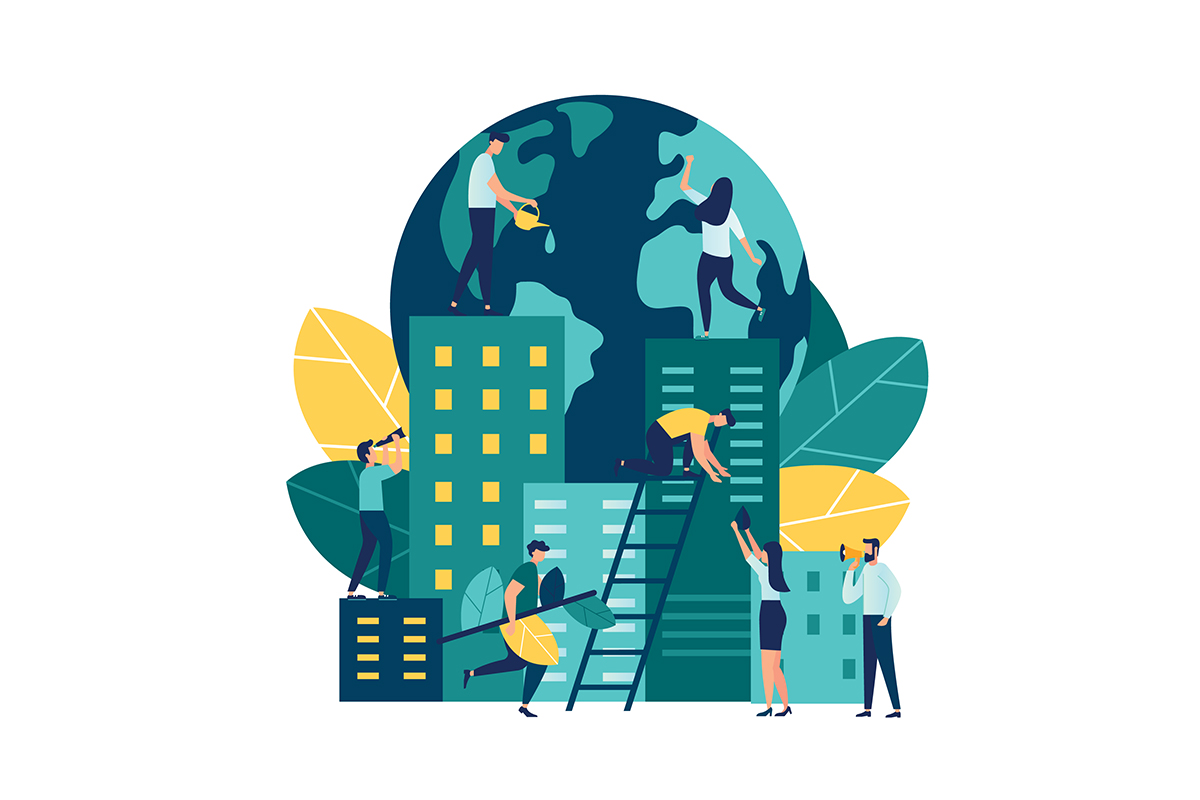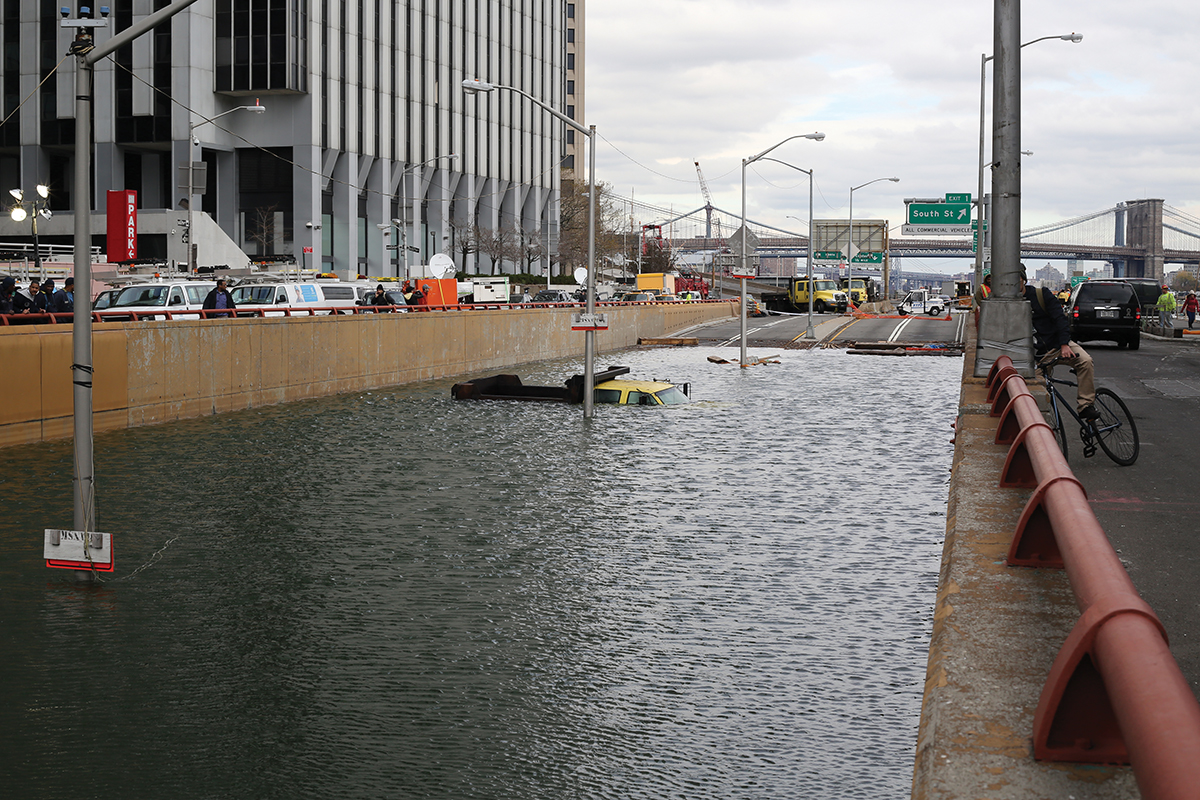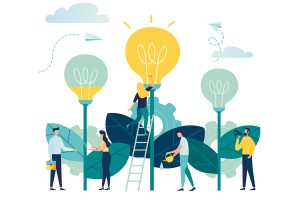In 1980, the biologist Paul Ehrlich and the economist Julian Simon engaged in a famous debate. Ehrlich argued that ongoing population growth would lead to overconsumption of natural resources and a collapse in food consumption per person. Simon countered that rising scarcity creates incentives to unleash human ingenuity and address the challenge.
Flash forward to 2020, when we were confronted by a risk that again posed existential questions. The Covid-19 crisis was a wakeup call against complacency about our standard of living. The economic dislocation and disruption of daily life caused by social distancing and other measures rocked the global economy to its foundations. A silver lining was that we learned how quickly the world can adjust to shocks that we did not anticipate and for which we were unprepared. But it remains an open question how nimble we will be in responding to future threats.
During the Covid-19 pandemic, the challenge of climate change was temporarily displaced from the news. But the challenge has not gone away. As Julian Simon understood, human ingenuity will play a central role in reducing climate risks because our ability to adapt is accelerating over time.
Coping with Change
We have two chief strategies to cope with the threat of climate change. First, we can mitigate the threat by reducing our production of greenhouse gas emissions. Second, we can adapt to the threat by changing how we live in response to new threats.
My work largely focuses on the second strategy. It explores how people, firms, and governments can adapt to the risks posed by climate change and how we can change our lives even as climate change grows more severe.
A great race is unfolding as global greenhouse gas emissions continue to rise but we become better at adapting to the emerging threat. The outcome of the race will depend on how people, firms, and governments cope with new risks.
Given what we know, the rational strategy in the face of growing climate risk is to engage in both mitigation and adaptation. But at least in the short term, global greenhouse gas emissions will continue to rise as world per capita income increases. For the billions of people in the developing world who seek a better life, these income increases will be a good thing. However, given current technologies, continued emissions will exacerbate the climate change challenge, which will make adaptation even more important to guarantee future improvements in people’s standard of living.
A great race is unfolding as global greenhouse gas emissions continue to rise but we become better at adapting to the emerging threat. The outcome of the race will depend on how people, firms, and governments cope with new risks.
In 1980, Julian Simon said that “discoveries, like resources, may well be infinite; the more we discover, the more we are able to discover.” Today, Simon’s ideas about the role that human capital and ingenuity play in building our individual and collective resilience are as relevant as ever given the climate challenge.
The Role of Induced Innovation
As millions of U.S. households and billions of people around the world seek new solutions to adapt to climate change, there is a huge market for firms that can devise products that help people cope. Our set of feasible coping strategies increases over time as innovation takes place. The next Elon Musk must choose what problems she will solve. The profit motive helps her prioritize.
Market demand drives the direction of innovation. Drug companies focus their efforts developing new drugs for diseases featuring a large market demand for cures. If few people suffer from a disease, then drug companies have much weaker incentives to pay the fixed costs and bear the risk of developing new medicines for that disease. Perhaps ironically, if climate change is expected to cause significant aggregate damage to the population through increasingly intense heat waves, then this creates a profitable market niche for entrepreneurs who can devise solutions. For those new market products that require larger upfront fixed costs, for-profit firms will need to be convinced that the aggregate market is large. When entrepreneurs anticipate that there will be large future demand for an innovative climate adaptation solution, this creates the incentive for them to enter this market to design the new product.
This suggests that there is strength in numbers when it comes to adapting to climate change. If only one household experiences mold due to heavy rains, then no firm will develop a new solution to remove the mold. If millions of people face this challenge because of climate change-induced heavier rains, then it is profitable for firms to engage in the risky and costly search for solutions. The flooding in Houston caused by Hurricane Harvey created significant mold damage for thousands of homes. If entrepreneurs anticipate these emerging opportunities, then the power of human ingenuity is unleashed in the search for solutions.
In short, economics predicts that individuals will respond to the law of demand. If the price of adaptation-friendly goods declines, because of economies of scale and because of global supply chains lowering the average cost, then people will be more likely to adopt them.
Given the significant degree of income inequality in the U.S. economy, the super-rich play a special role in driving technological change. In June 2018, Bill Gates blogged about a new technology that guarantees that vaccines remain cold as they are transported to rural places. He funded this innovation in part because he anticipated that there is a crucial need for making sure that vaccines do not spoil as they are transported to those who need them. Such cooling transport technology is another example of an innovation that fuels adaptation. Due to his personal fortune and his ambition to improve the world’s quality of life, Gates personally helped cause this innovation.
Development economists have been concerned that drug companies have much weaker incentives to design new drugs for people in poor nations because such drugs will generate less profit. The same logic applies in induced innovation for mitigating climate risk. If billions of people face similar challenges of extreme heat and sea level rise, new market opportunities will arise from this aggregate demand for solutions. In contrast, if hundreds of millions of poor people face a location-specific challenge, for-profit firms have less of an incentive to solve this issue because aggregate demand for such a solution will generate less profit. In this case, nonprofit foundations such as the Gates Foundation and other development agencies can play a role in promising a financial payout to the firm that comes up with a solution.
As new goods are created and marketed, firms enter and compete against one another for market share. This competition benefits consumers as the price of such goods declines. Declining prices mean that even poorer people can afford these goods. We see this happening already. The quality-adjusted price of key adaptation-friendly products ranging from air conditioning to cell phones to refrigeration have all declined sharply over time.
The open research question here is how effective these goods are in offsetting the new risks we face. Research documenting the role of the widespread diffusion of the air conditioner in attenuating the outdoor heat and death rate correlation offers one optimistic example. The widespread ownership of cell phones represents another example of a new technology that plays a key role in keeping people current on their social network, trusted news sources, and local government actions. This real-time information helps people make informed long-term choices and short-term decisions during a crisis.
The Zoom Boom
The meteoric rise of Zoom software and other technologies during the Covid-19 pandemic showcase just how quickly technological solutions can proliferate in response to massive demand. In early March 2020, every university in the United States closed down and went online to protect people from the virus. Professors gave lectures from home using Zoom, and students learned online.
Many for-profit firms are now switching to remote working and conferencing via the web. As firms learn how to create teams from remote locations, this opens up several adaptation possibilities. For one thing, it can help workers avoid traffic congestion and the delays associated with it, while also reducing local air pollution. By unbundling one’s place of work from one’s place of residence, workers will have much more freedom to choose where they live based on criteria other than commuting. This will help them to adapt to those risks and opportunities that they prioritize.
By unbundling one’s place of work from one’s place of residence, workers will have much more freedom to choose where they live based on criteria other than commuting.
Improvements in information technology such as teleconferencing allow for a physical separation of a firm’s headquarters from its back offices and production centers. A firm can keep a few workers in a coastal center city location and send factories and back offices to distant locations. If coastal cities are especially prone to climate risks, then production activity can move to safer locations. If a firm can coordinate across its various functions without them being physically near each other, then this opens up many more possibilities of where they can locate. This increased menu of locations facilitates adaptation.
More jobs now feature work that does not require face-to-face contact. Thus, people can be productive during extreme weather events that limit their ability to travel away from home. Future snowstorms in Chicago, for example, will cause less short-run disruption for worker productivity because workers can engage in remote work on such days.
Could Wall Street Leave Wall Street?
Our economy features many sectors, but our most productive firms are concentrated in a handful of high-tech industries, and these industries tend to cluster in specific cities. Given the place-based threats that climate change poses, could our major firms and key productivity hubs be significantly damaged by climate shocks?
In 2012, I was called by a reporter from The Economist who was writing a story about the risks that climate change poses for coastal cities. I was asked, “Isn’t it true that Wall Street is a major center of finance in the United States?” I replied, “Yes.” “Is it true that sea level rise could flood Wall Street as Hurricane Sandy recently demonstrated?” I said, “Yes.” “Thus, couldn’t climate change, by accelerating sea level rise, decimate the U.S. economy by destroying Wall Street?” The reporter’s argument was that damage to key productive places could greatly injure our overall macroeconomy.
Building on the work of Gary Becker and Julian Simon on human capital, I reject this place-based theory of economic growth. The human capital approach argues that any geographic area that has a pool of talent will experience economic growth. In the modern economy, places are productive if skilled people and well-managed firms locate there. The great financial cluster of Wall Street would become a less productive place if ambitious, young finance workers stopped moving to New York. Consider an extreme example: If sea level rise threatens Wall Street, and firms take no preventive actions, then we certainly could suffer a major productivity shock. Given that Wall Street firms make their money from anticipating market trends, such firms have strong incentives to be aware of the new climate risks they face due to where they have located their key workers and assets.
Given the physical size of the United States, there are many places to build our productivity hubs given that cities take up little physical space. This means that there are many possible places to build future cities if our current productivity hubs face significant climate risk.
If the place called Wall Street is threatened by sea level rise, major firms will anticipate this threat and move to higher ground. Such firms will have strong incentives to find areas that face less future climate risk. If Goldman Sachs exits an increasingly risky southern Manhattan, then other firms will follow, so that the economic agglomeration re-forms in a safer, more resilient area. If this dynamic plays out, New York City loses a major employment center and apartment prices nearby will fall in value, but there will be new wealth creation on relatively safer land. This optimistic scenario implicitly assumes that current clusters of productive firms can coordinate together and quickly re-form on higher ground.
This process will play out through a trial-and-error learning process. Given the physical size of the United States, there are many places to build our productivity hubs given that cities take up little physical space. This means that there are many possible places to build future cities if our current productivity hubs face significant climate risk. This transition would incur costs and time. A silver lining of forming the new productive cluster on higher ground is that this would provide a new opportunity to reconsider what economic activities should cluster together, and thus the new productivity center may be even more productive than the original cluster.
The Bet, Round II
These are just a few of the examples that I explore in my new book, Adapting to Climate Change: Markets and the Management of an Uncertain Future. The upshot of the book is that markets and human ingenuity help us adapt to new risks that we face. We are not passive victims. Humans have substantial ability to cope with emerging risks, whether from Covid-19 or climate change. Each day we grow stronger in our ability to withstand the changes that Mother Nature throws at us. As rational economic agents, we are increasingly aware of these risks, and our individual demand for solutions adds up to sufficient aggregate demand to unleash innovations that enable us to adapt.
The possibility that we are growing ever better at adapting to climate change evokes the older debate between Julian Simon and Paul Ehrlich. Back in the 1980s, they debated whether the growth of the world’s population would harm our standard of living. Ehrlich argued that a growing population would increase demand for scarce resources and bring about a Malthusian collapse.
Simon countered by focusing on the role that market price signals play in directing behavioral change. He argued that prices would rise to reflect the rising scarcity of resources, and this would trigger conservation and supply-side innovation to search for substitutes. Simon also argued that population growth raises the possible set of innovators whose ideas would increase the abundance of resources. Ehrlich bet that natural resource prices would rise, while Simon bet that prices would fall as human ingenuity would identify substitutes and people would respond to the incentives embodied in price signals. Simon won the bet.
The ongoing climate adaptation challenge poses a similar high-stakes contest. Given that the world has finite land and many people, which regions will remain livable as climate change grows worse? An extension of Simon’s logic posits that our growing human capital will allow us to discover ways to offset the new environmental pressures we face. Critics will ask whether we have sufficient time to discover these innovations. But innovators are always looking for the next big profit opportunity. The anticipation of future demand creates an incentive today to research potential solutions. If enough entrepreneurs enter this competition, the probability of a significant breakthrough rises sharply. Although we must avoid wishful thinking that technological advances alone will protect us, the technological frontier is shifting thanks to the rise of the global middle class seeking new products to help them cope with new risks and financed by the global capital market.
Today, we are adapting to the new risks posed by Covid-19. We face both contagious disease risk from the virus and fiscal risk associated with the economic shutdown. In the midst of the pandemic, the federal government has changed its rules and policies several times, and this has contributed to uncertainty and planning challenges for firms and households. The private sector can play a more productive role in facilitating adaptation to such shocks—as long as federal policy creates credible incentives for experimentation, innovation, and investment.
New Rules of the Game
My book discusses new “rules of the game” that would accelerate our progress on climate adaptation. For example, I believe that the United States needs to remove policies that subsidize homeowners, thereby encouraging more renting, and we need more “upzoning” that allows for taller and denser construction.
Such issues may not seem related to climate adaptation, but they are. Homeowners hold an undiversified asset portfolio—they have put all of their “eggs in one basket.” Climate change increases the risk of such place-based bets. If the federal government no longer subsidized home ownership, as it currently does through a variety of policies, then more people would choose to rent, helping them hedge climate risk.
It is important to recognize that the unintended costs of these government policies will rise over time due to climate change; thus, it is in our best interest to consider policy reforms that allow the price system to signal emerging scarcity.
Other policy solutions relate to classic PERC land-use themes. For instance, phasing out farming subsidies would reduce moral hazard concerns as farmers would have a greater incentive to adjust their activities to adapt to the emerging profit opportunities created by climate change. If an area faces greater drought risk and the price of water is rising, farmers would substitute away from water-intensive crops. To take another example, by subsidizing living in flood or fire zones and consuming natural resources, federal and state governments often slow down the adaptation process.
It is important to recognize that the unintended costs of these government policies will rise over time due to climate change; thus, it is in our best interest to consider policy reforms that allow the price system to signal emerging scarcity. Unleashing price signals dovetails with Julian Simon’s vision for building a more prosperous nation and a more resilient economy—and, ultimately, increasing our ability to “take a punch” from Mother Nature, no matter what she ends up throwing at us in the future.






